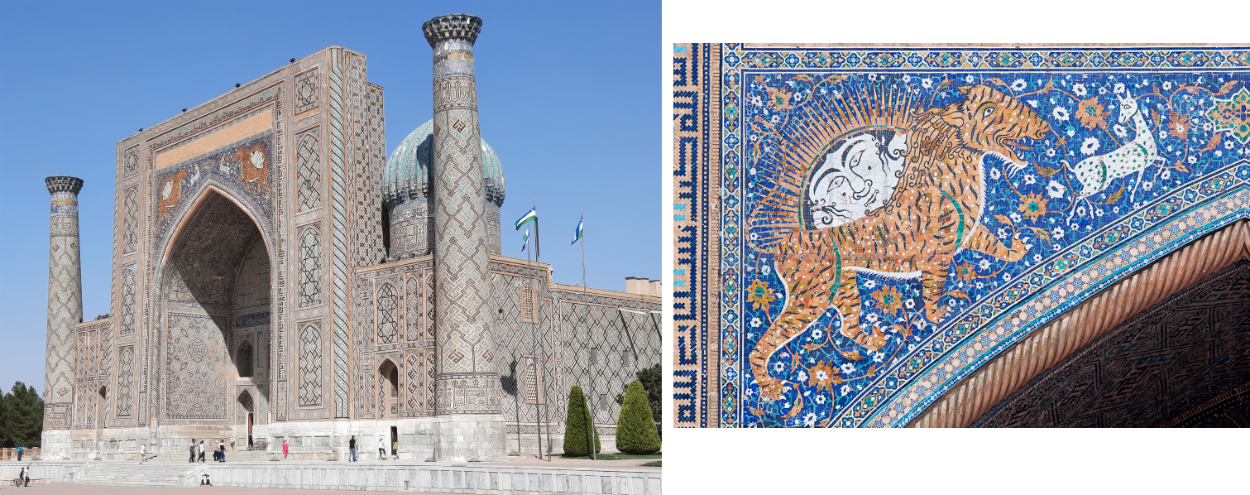Shir Dor spandrel

depicting living creatures
The spandrel of the iwan of the Shir Dor madrassa is remarkable. While Ulug Beg was content to use star-like geometric forms , Yalangtush (1576-1656, a military commander, emir of Samarkand) sponsored a striking composition depicting two lions chasing deer. This motif, almost certainly borrowed from a contemporary work at the bazaar of Isfahan, Iran. The design likely met approval with the ruling Khan, Imam Quli Khan, whose vizier Nadir divan Begi created a similar design for the eponymous madrasa in Bukhara. On the page Nadar Divanbegi madrassa - Bukhara you can find more background on depicting living creatures in Uzbek architecture.
In The Bukharan School of Architecture in the 15th–17th centuries – Samarkand, 2022 (pp. 289 - 298)
Abbasova-Yusupova M.A. writes extensively about Depictions of Living Creatures. She states: "In the first half of the 17th century under the Ashtarkhanids, painting literally ‘burst forth’ in the form of large zoomorphic depictions on to the tympana of portals adorning the majestic buildings of Transoxiana facing on to the central squares of its two capitals. These were the Shir Dor Madrassa on the Registan square in Samarqand and the Nadir Divanbegi Madrassa in the Lab-i Hawz ensemble in Bukhara. There was no such demonstrative use of distinctive, large-scale and colourful zoomorphic decoration in the surviving buildings of other countries belonging to the Muslim world and it was only to be found in the architecture of Transoxiana, which constituted a phenomenon all of its own in the architecture of 17th century Central Asia. We can only assume that in the 17th century as well these depictions served as an allegory and symbolized specific ideas linked with the greatness of the age, the ruler and his power and also with the donors who commissioned such buildings."